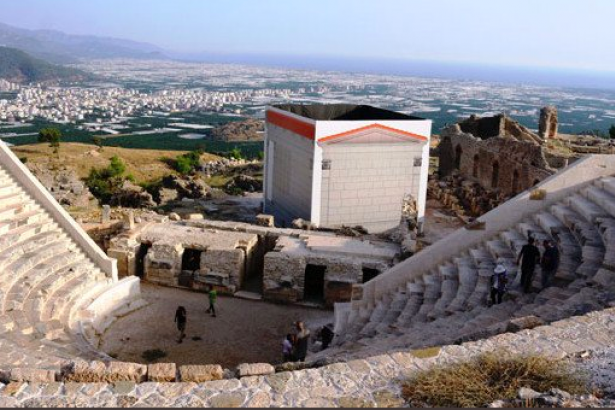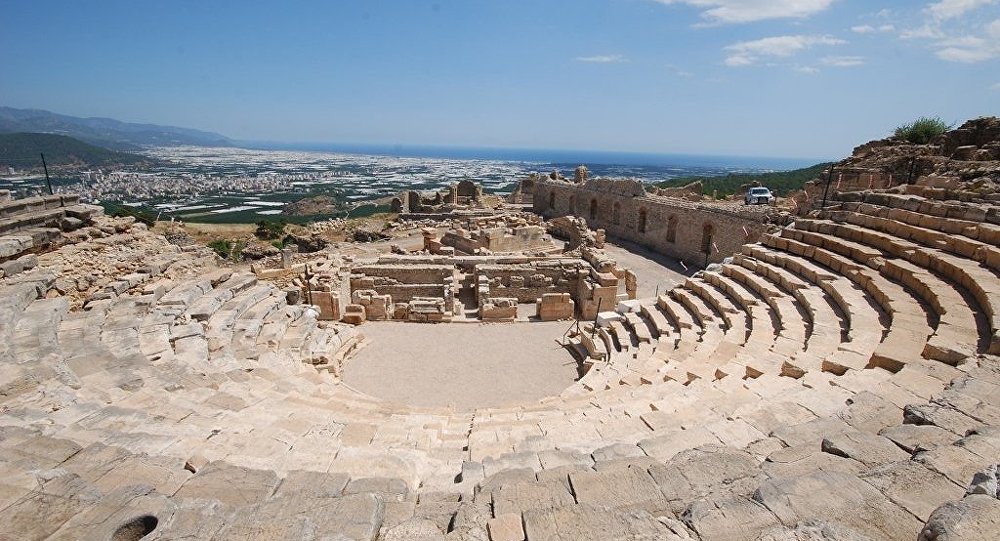Image of original form attached on ancient monument due to botched restoration

The restoration work in the ancient city of Rhodiapolis in the Kumluca district of the southern province of Antalya has halted due to a botched restoration. The Opramoas monument has been covered with an image of its original form. The final state of the ancient city and the historic monument is regarded as one of the most striking examples of negligence shown to the cultural heritage of Turkey.
Mistakes have been detected in the restoration attempt of the ancient theatre and monument of Opramoas, itself a symbol of the ancient city of Rhodiapolis, allocated to the municipality of the ruling Justice and Development Party by the Ministry of Culture and Tourism in Antalya. The monument was built for Opramoas, a famous Lycian civic benefactor in the 2nd century CE.
Work on the city has stopped due to the botched restoration, and authorities have asked for the preparation of a new scientific report on the restoration of the ancient city.

Despite the report being prepared, new work to correct the mistakes of the original restoration attempt has not started. Upon the failure of the restoration process, authorities have decided to cover the ancient monument to conceal the mistakes of the restoration. The ancient monument has been covered with plastic, nylon, and wood materials, and original photographs of the inscriptions were affixed onto it.
Akdeniz University had begun archaeological excavations in the ancient city of Rhodiapolis in 2006. Ever since the ancient city was discovered in 1892, excavations have unearthed artefacts from the Lycian, Roman, and Byzantine periods. One of the most significant cultural artefacts discovered in the excavations at Rhodiapolis was the monument built for a famous Lycian benefactor named Opramoas in the 2nd century CE. The monument was found with an inscription listing the many charitable deeds the famous benefactor did for many Lycian cities.



